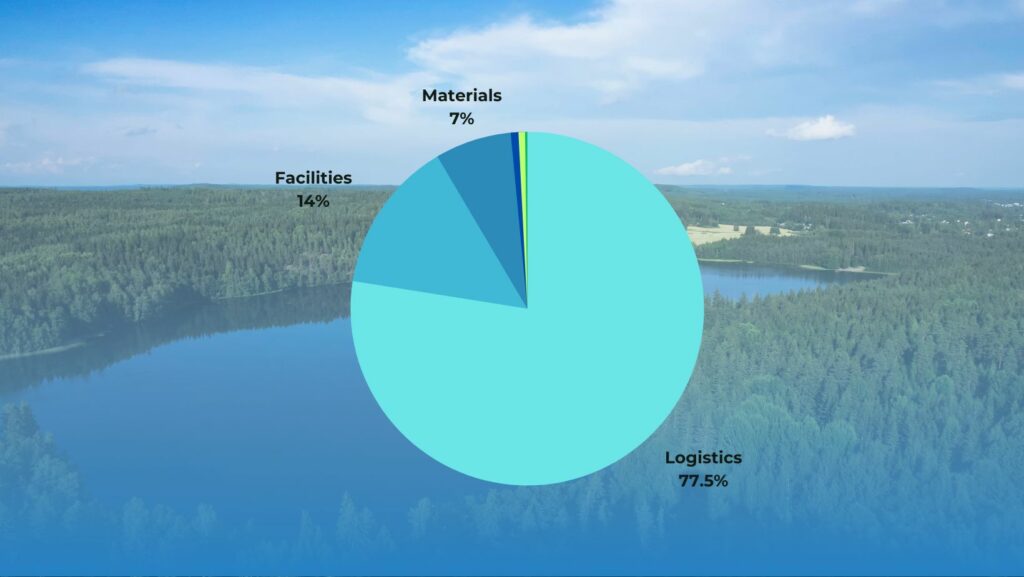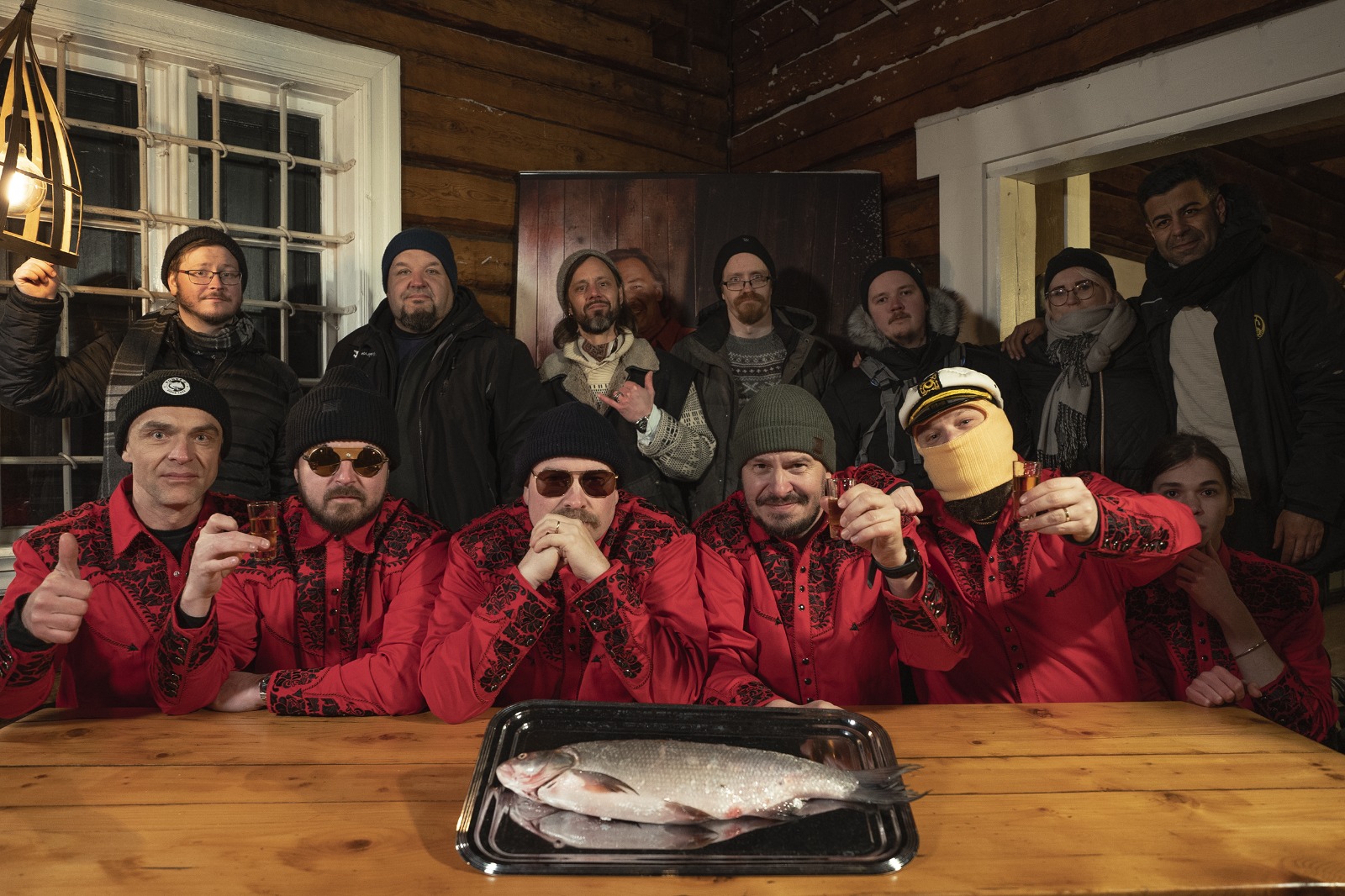
From 2022 to 2023, the film industry underwent a small improvement towards sustainability.
In the early days of the film industry, waste management was literally a mess. Filmmakers focused primarily on capturing their vision on camera, often ignoring the environmental impact of the production. Sets were built and dismantled without much attention being paid to recycling or minimizing waste. After each production, piles of trash, discarded supplies and excess materials were left behind.

Thu 13th of July 2023
As society’s environmental awareness grew, so did the understanding of the film industry’s obligation to minimize its carbon footprint. The first steps on filming sets towards more sustainable waste management practices were taken in the 1970s and 1980s. However, the real breakthrough didn’t happen until the turn of the millennium.
Nowadays, film productions encourage the use of renewable energy sources, the circular economy, waste minimization and consuming local foods and drinks. Nonetheless, an international big-budget film can still generate more than 200 tons of scrap metal, nearly 50 tons of construction and set waste, and 72 tons of food waste.
In Finland the situation is not as grave though. Audiovisual Producers Finland (APFI ry) published the first study of Finnish productions’ emissions of domestic productions, including the share of waste.
Less than 10% of the total emissions of the Finnish TV and movie industry came from materials and waste
However, the study’s sample is relatively small. Only 23 Finnish TV productions were involved in the study, which covered both fictional and non-fictional TV series. The total emissions of those productions were 886.7 tCO2, which corresponds to the annual emissions of 86 Finns.
The largest share (77.5%) of emissions came from logistics. According to the study, emissions from material purchases covered 7% of all emissions. The share of waste was 0.1%, half of which was mixed waste. The share of food, wood and textiles was also significant. The study did not include any films, even though, for example, Yle ordered more than 150 productions in 2022, of which more than 50 were films.

Circular economy and recycling
Let’s dive more into waste for a moment. In Finnish productions recycling and reusing have been fairly common due to a lack of resources. With the strategy of sustainable development, this will be emphasized even more in the future. Regardless of the filming location, most set and textile materials can be recycled without spending extra time or money.
There is something else on the sets that can be harmful to environment: plastic cups. The carbon footprint of disposable plastic cups has already been somewhat compared to other alternative products, such as compostable cups.
A plastic disposable cup can be an ecological alternative
Flanders Audiovisual Fund‘s sustainable development coordinator Tim Wagendorp and Jo Van Caneghem, who works in the materials technology department at the University of Leuven, compiled the carbon footprint of drinking water consumption using the Tanzanian film Binti, released in 2021.
One of the conclusions of their study was that choosing plastic cups is actually the most environmentally friendly choice, assuming they are properly sorted after use. Compostable cups break down too slowly in the industrial composting process, so they end up in mixed waste. Compostable drinking cups can therefore have an even larger carbon footprint than disposable plastic cups.
For many film crews, bottled water is often the first choice, because it is understandably the most convenient option, but it is also wasteful. Replacing it with alternative solutions can be complicated as well.
Let’s look at the numbers. For example, 17 million barrels of oil are needed to meet the annual demand for bottled water in the United States, which would be enough to fuel 1.3 million cars a year. That’s something to think about.
Responsible production houses are a prerequisite for a sustainable film industry
By training filming crews, production houses and stakeholders, a workforce is created that actively participates in greener production. Through training that focuses on energy efficiency, waste management, sustainable procurement, water conservation and carbon footprint reduction, film studios can empower their employees to make environmentally responsible decisions at all stages of production.
It also promotes cost-efficiency and increases understanding of the environmental impact of film production. In 2022 APFI trained a total of 275 people, who were awarded the “sustainable production” recognition. The majority, 72% of them, were from the capital of Finland, Helsinki. Kajawood Studios also trains its personnel in environmental awareness and, if necessary, participates in APFI’s training sessions.
Sources:
https://www.forbes.com/sites/sap/2022/02/28/how-film-production-is-becoming-more-sustainable-and-profitable/?sh=5eca9b075bad
https://www.latimes.com/business/la-fi-ct-onlocation-20140731-story.html
https://www.sciencedirect.com/science/article/pii/S2212827122001263
https://apfi.fi/ajankohtaista/suomen-ensimmaiset-tilastot-kotimaisten-audiovisuaalisten-tuotantojen-ymparistovaikutuksista-julki/

From 2022 to 2023, the film industry underwent a small improvement towards sustainability.

Finland's well-developed film industry infrastructure, including state-of-the-art studios and skilled professionals, makes it an attractive choice for productions of all…

AI is revolutionizing VFX, giving artists powerful tools to push the boundaries of creativity and efficiency. AI technology is advancing…

Sustainable filming equipment are here to stay. Read more about how ARRI and Red are keeping their cameras on the…

The production incentive has played a major role in getting and keeping the productions in Finland. Read more here!

Kajawood Studios helps producing music videos from concept to edit. Read about our latest music video production here!